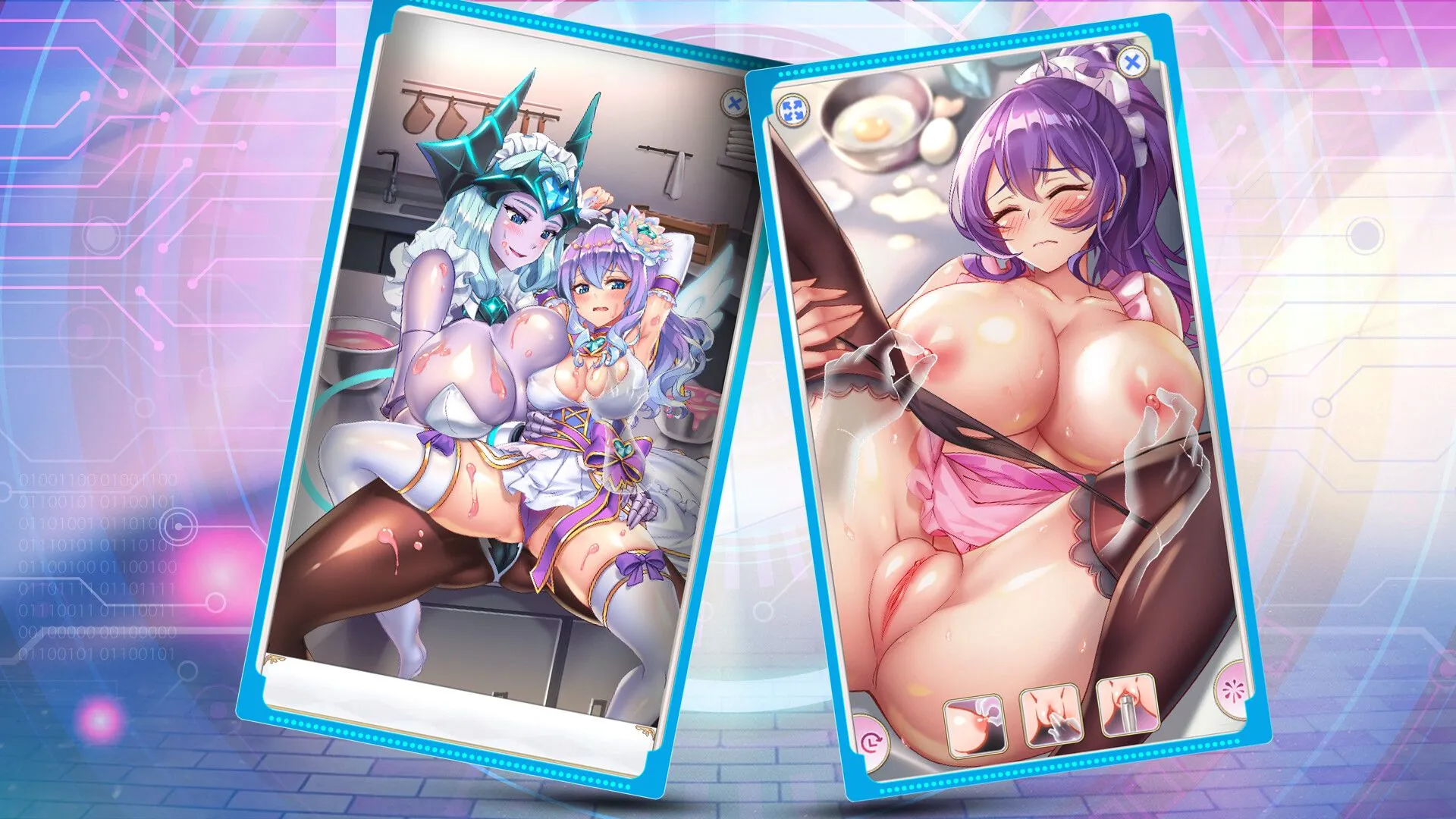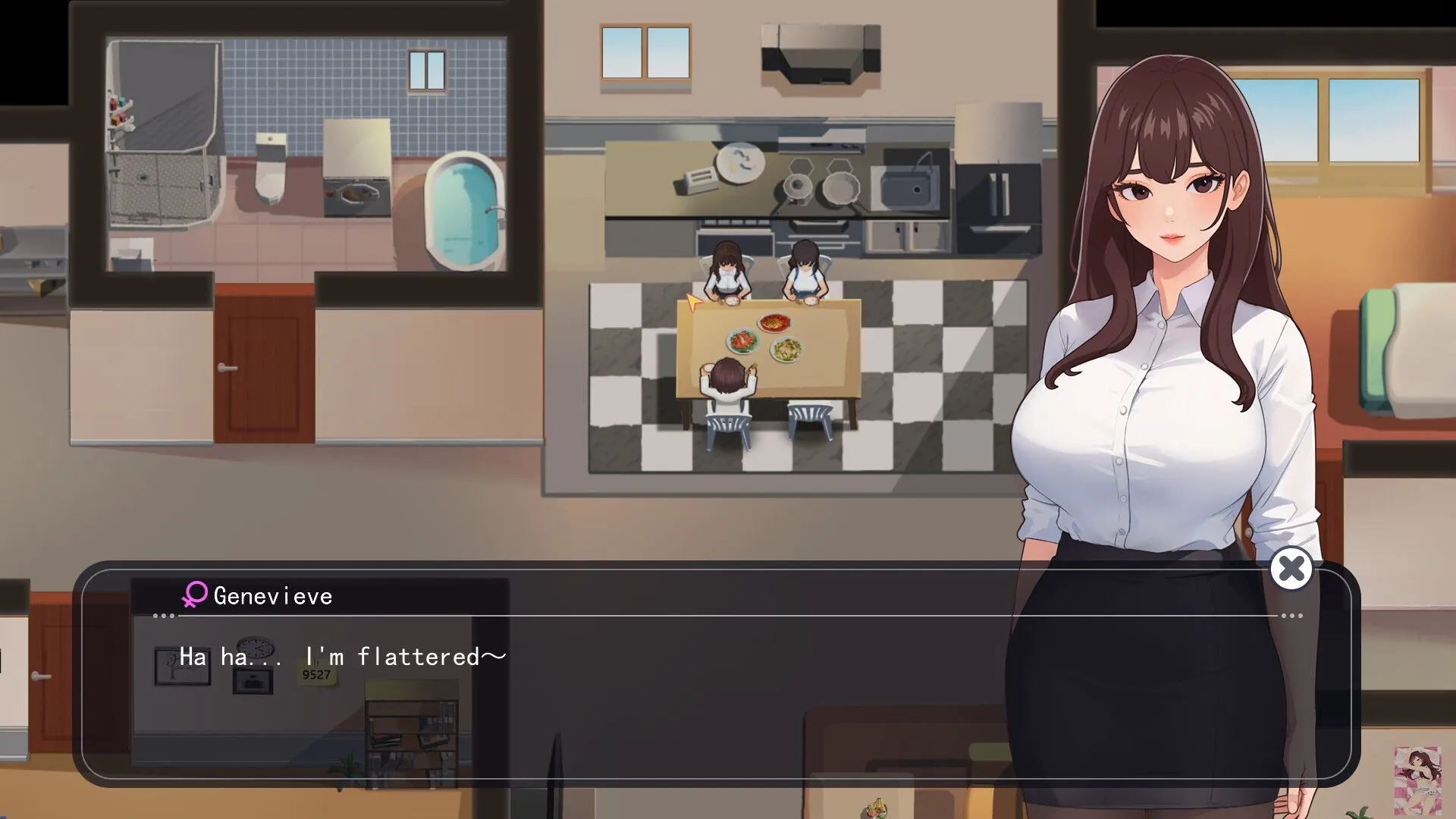
One Night Stand
Play One Night Stand
One Night Stand review
Master gameplay mechanics, features, and strategies in this indie visual novel experience
One Night Stand is a unique indie visual novel game that offers players an engaging narrative experience centered around decision-making and relationship dynamics. This comprehensive guide explores everything you need to know about the game, from core mechanics to advanced strategies. Whether you’re new to the title or looking to maximize your gameplay experience, this walkthrough covers essential tips, gameplay features, and practical advice to help you navigate the game’s various scenarios and outcomes. Understanding the game’s mechanics and available options will significantly enhance your enjoyment and help you unlock different story paths.
Understanding One Night Stand Game Mechanics and Core Features
What Makes One Night Stand a Unique Gaming Experience
You wake up in a strange room, with a pounding headache and absolutely no memory of the night before. 😵 A stranger is sleeping next to you. Your mission? Piece together what happened before they wake up. This is the brilliant, anxiety-inducing premise of One Night Stand, an indie visual novel that turns a single, awkward morning into a captivating interactive story. 🎭
What sets this game apart isn’t flashy graphics or complex action sequences; it’s its raw, relatable humanity. Most games have you saving the world. This one has you navigating the delicate social minefield of a walk of shame. It’s this grounded, often cringe-worthy realism that makes the experience so memorable. You’re not a hero with a sword; you’re just a person trying to figure out how to exit a situation with a shred of dignity. 🙈
The indie visual novel gameplay is deceptively simple. The entire game takes place from a first-person perspective in that one bedroom. Your interaction with the world is limited to looking at and clicking on objects, which triggers thoughts and memories. But this limitation is its greatest strength. It forces you to be observant, to read the subtext in the environment, and to carefully consider every dialogue option. The game’s presentation is a key part of its charm, featuring a distinctive hand-drawn art style and a subtle, atmospheric soundtrack that perfectly complements the mood of quiet panic and curiosity. 🎨
I remember my first playthrough. I was so focused on being “cool” and saying the right thing that I completely missed crucial environmental clues. I ended up making assumptions about my companion that were completely wrong, leading to one of the more awkward and abrupt endings. It was a powerful lesson in how this game values genuine observation over smooth-talking. The decision-based game systems here aren’t about good or evil choices; they’re about being perceptive, empathetic, or sometimes, just clumsy and human.
Essential Gameplay Mechanics You Need to Master
At its heart, understanding the One Night Stand game mechanics is about understanding cause and effect in a narrative space. This isn’t a game you “win” in a traditional sense; you experience an outcome. Your journey is shaped by a series of subtle and not-so-subtle choices. Let’s break down the core systems you’ll need to master for a fulfilling playthrough.
The Power of Observation 👀
The most fundamental mechanic is exploration. Before the other person wakes up, you have free reign to inspect the room. Every object you click on—a phone, a condom wrapper, a half-empty glass of wine—provides a piece of the puzzle. These aren’t just collectibles; they are vital context clues that inform your understanding of the situation and the character you spent the night with.
Pro Tip: Don’t rush this phase! Inspect everything. The notes and memories you unlock directly influence the quality of your subsequent conversations and the endings available to you.
Dialogue: The Heart of the Decision-Based Game Systems 💬
Once your companion awakens, the game shifts to dialogue trees. This is where your how to play One Night Stand knowledge gets put to the test. Your responses range from curious and kind to defensive and dismissive. There are no highlighted “correct” answers. The “best” outcome is subjective and depends entirely on the kind of story you want to tell and the connection you want to forge (or sever).
The brilliance of these decision-based game systems is their realism. A question that seems innocent can sometimes be perceived as prying, and a joke can fall completely flat. It perfectly captures the delicate dance of a morning-after conversation.
Replayability and Multiple Endings 🔁
This is arguably the most rewarding aspect of the One Night Stand game mechanics. A single playthrough is short, maybe 15-20 minutes. But to see everything the game has to offer, you’ll need to replay it multiple times. There are over a dozen different endings, each reflecting a different path your interaction could take.
On my third replay, I decided to play as a completely oblivious and cheerful person, ignoring all the red flags and awkwardness. The result was hilariously tragic and entirely different from my first, more cautious attempt. This indie visual novel gameplay loop encourages experimentation and rewards you with a more complete, nuanced understanding of both characters and the event itself.
To help you get a handle on the core interactive elements, here’s a breakdown of the key features you’ll be using:
| Gameplay Feature | Primary Control | What It Does |
|---|---|---|
| Environmental Inspection | Mouse Click / Tap | Reveals thoughts, memories, and story context by interacting with clickable objects in the room. |
| Dialogue Selection | Mouse Click / Tap | Presents multiple response options that shape the conversation and directly influence the relationship and ending. |
| Inventory / Phone | Access via UI Button | Allows you to review collected items and messages, which can provide hints for conversation topics. |
| Auto-Play | Toggle in Settings | Automatically advances text, perfect for subsequent playthroughs when you want to skip through familiar dialogue. |
| Text Log | Access via UI Button | Lets you scroll back through previous dialogue, ensuring you never miss a crucial piece of conversation. |
Navigating Game Controls and Interface Options
Thankfully, the developers have made the narrative game controls and interface incredibly intuitive, ensuring that the technology never gets in the way of the story. Whether you’re a visual novel veteran or a complete newcomer, this visual novel interface guide will have you navigating the experience seamlessly.
Basic Inputs: It’s All About the Click 🖱️
The entire game is controlled with your mouse (on PC) or your finger (on touchscreen devices). A single left-click is your universal action button. You use it to:
* Advance text and dialogue.
* Select your response from a list of options.
* Click on interactive objects in the environment.
There’s no keyboard support for movement or complex commands, which keeps the focus squarely on the narrative. This minimalist approach is a hallmark of well-designed narrative game controls; they fade into the background, letting the story take center stage.
Understanding the Heads-Up Display (HUD) and Menus 🎮
The on-screen interface is clean and unobtrusive. During dialogue sequences, your response options appear clearly at the bottom of the screen. During exploration, your cursor will change when it hovers over an interactive object, eliminating any guesswork.
The menu system, accessible usually by pressing ESC or a menu button, is where you’ll find:
* Save/Load: Crucial for experimenting with different dialogue branches without replaying the entire wake-up sequence.
* Settings: Here you can adjust the volume for music and sound effects, toggle fullscreen mode, and control text speed.
* Auto-Play Mode: As mentioned in the table, this is a fantastic feature for subsequent playthroughs.
This clean design is a core part of any good visual novel interface guide. It gives you all the tools you need without any clutter, making how to play One Night Stand a breeze to learn.
A Personal Approach to Mastering the Game 🏆
From my experience, the best way to enjoy this game is to lean into the role-playing. Don’t try to game the system on your first try. Instead, ask yourself: “If this were really me, what would I do?” Would you nervously check your phone? 🤳 Would you try to sneak out? Would you be honest about your confusion?
Embrace the awkwardness! Some of the most authentic and interesting endings come from making “bad” choices or saying the wrong thing. The game is a safe space to explore social dynamics and consequences. Use the save/load function liberally to see how a single different response can send the conversation in a wildly new direction. This hands-on practice is the ultimate game mechanics tutorial.
Frequently Asked Questions
I’m stuck and keep getting the same ending. What should I do?
This is common! The key is to change your behavior fundamentally in the exploration phase. 👀 Before the character wakes up, click on different objects than you usually do. The memories you unlock will open up new dialogue options. Then, during the conversation, deliberately choose responses that are the opposite of your usual style. If you’re normally polite, try being blunt. If you’re usually curious, try being reserved.
Are the controls the same on all platforms?
Yes, the core narrative game controls are consistent. On PC, you use the mouse. On mobile or tablet versions, you tap the screen. On consoles, you’ll use a controller to move a cursor and make selections. The input method is always simple and direct, aligning with the game’s minimalist design.
How long does it take to see all the content?
A single playthrough is very short, but to experience all the endings and dialogue variations, you’re looking at 2-3 hours of total gameplay. The short runtime is what makes the indie visual novel gameplay so compelling for replays; it’s easy to jump back in and try a new approach.
Is there a “best” or “canon” ending?
Not really! 🤷♀️ That’s the beauty of the decision-based game systems. The game refuses to judge your choices. One ending might feel more satisfying or conclusive to you based on your personal feelings about the characters and the situation, but there is no official “good” ending. The value is in seeing the different, equally valid, ways the morning can unfold.
Ultimately, mastering One Night Stand is less about learning complex commands and more about understanding human interaction. It’s a beautifully crafted, empathetic experience that uses its simple game mechanics to tell a deeply personal and different story every time you play. So dive in, be curious, be awkward, and most importantly, be yourself. Your unique story is waiting to be discovered. ✨
One Night Stand stands out as a thoughtfully crafted indie visual novel that prioritizes player agency and narrative depth. By understanding the core mechanics, exploring different story branches, and mastering advanced features, you can fully appreciate what this game offers. The beauty of One Night Stand lies in its multiple pathways and endings, encouraging players to revisit scenarios and discover new perspectives. Whether you’re drawn to the narrative experience, the decision-making elements, or the exploration of different outcomes, this game rewards curiosity and experimentation. Take your time with each playthrough, pay attention to how your choices ripple through the story, and don’t hesitate to replay sections to experience alternative paths. The game’s design encourages reflection on how small decisions can significantly alter experiences, making each playthrough a unique journey. Dive in, explore the various scenarios, and discover why One Night Stand has earned recognition as an underrated gem in the indie gaming community.










